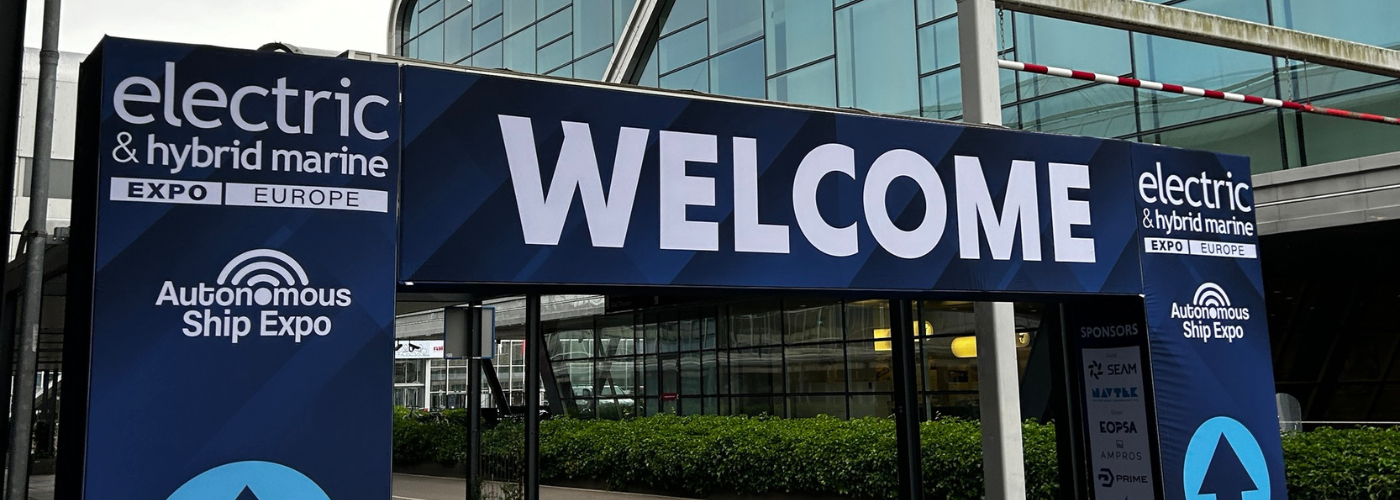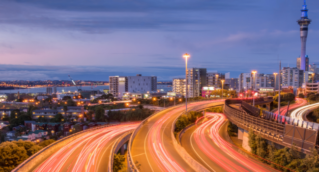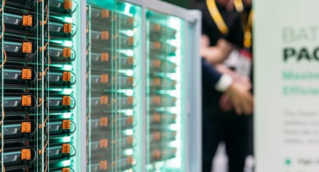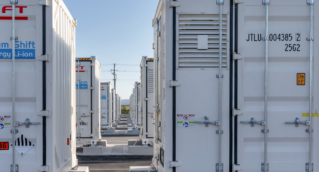5 July 2024
From Engines to Batteries: Embracing Change in the Maritime Industry

McKay Marine Manager, Ben Haselden recently attended the world’s leading exhibition and conference for maritime electrification, decarbonisation, and GHG reduction solutions, the Electric & Hybrid Marine Expo, in Amsterdam. Reflecting on the three-day event, Ben shares his thoughts in our latest opinion blog.
Engine – /ˈɛn(d)ʒ(ɪ)n/ ; A machine with moving parts that converts power into motion.
It feels somewhat ironic that I am opening a segment about an electric and hybrid-oriented expo with an emphasis on engines.
However, this year’s underlying theme centred around alternate and E-fuels and the relationship with batteries and hybrid solutions heading forward. What can a battery do for an engine? And what can an engine do for a battery?
As the marine industry has grappled with thinking towards carbon reduction the little birdie of reason sitting on our shoulders has echoed for a long time, “how are we going to do it?”. While now highlighting engines, it demonstrates that the course the marine industry navigates is far from set with change being rapid and transformative
We are starting to see from the industry that batteries are not the sole solution. They do remain equally pivotal to what we genuinely need on a larger scale for the worlds maritime industry to achieve the IMO’s aggressive carbon reduction targets by 2050. The introduction of the fiercely contested Carbon Intensity Indicator (CII), which dictates how much fuel is allowed to be burned per nautical mile in relation to its relevant ship size, will bring the use of hybrid drivetrains into play much more than ever. But right now, an industry in the infancy of setting its true demand for alternative propulsion solutions is realising that there is no single silver bullet.
Although there is already options of fuel cell and stack systems available for various E-Fuels like hydrogen, ammonia and methanol, it’s likely the industry will see some adaptations in the earlier phases of conversion with e-fuels and internal combustion engines given the large amount of which, remain in the worlds fleet in vessels not yet ready, or able to convert completely.
The conundrum is still that fossil made E-fuels increase the total GHG lifecycle and emissions through the production process. Positively major operators like Maersk are converting large portions of its fleet to dual fuel engines and investing in green methanol production. It’s likely as a result that we will quite quickly see the turn of the tide with green production of E-Fuels making a new market in themselves.
Shifting the focus to non-IMO vessels and systems much closer to what we (McKay) excel in, hold some interesting developments in the roll-out and growth of solid-state batteries. They are edging ever closer to being on the horizon rather than over it. AYK’s Chris Kruger spoke of the “holy grail” and how these will change the industry, but again I’ll reiterate… the developments are about coming onto the horizon not being on it. The meaning of this is, we need to find a balance in an industry that is constantly evolving, and we need to adapt to the now, NOW! All while still leaving an eye on the horizon.
Interestingly, Europe has been driven largely by strong government action from both a regulatory/mandate and financial incentive sense. This is something we here in New Zealand have not fully grasped yet, but we know it will come. What is more stand out, is the direction the USA state and federal governments are taking with particular attention to that of California and their Commercial Harbour Craft (CHC) regulations. Our recent announcement of collaboration with Auroura Marine Design and Golden Gate Ferries is another major step forward in addressing their carbon reduction requirements. This is something quite unusual for America given their hoorah, gas guzzling history. America is set to become the next Europe for maritime standards addressing carbon reduction, and that, is something that is truly remarkable.
No matter where and what we look at, we need to take the following mantra forward and live by (for now at least) “what can a battery do for an engine, and what can an engine do for a battery…” Ponder that in all avenues…



